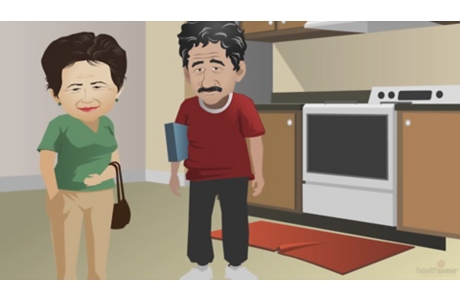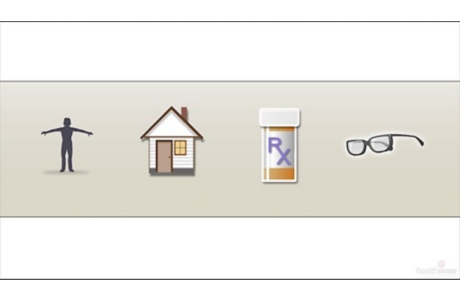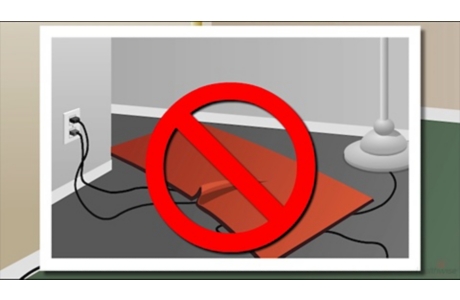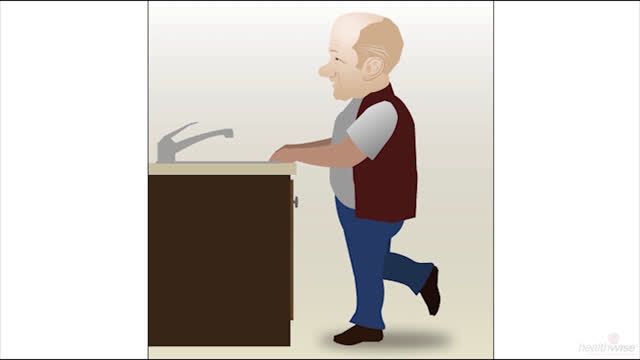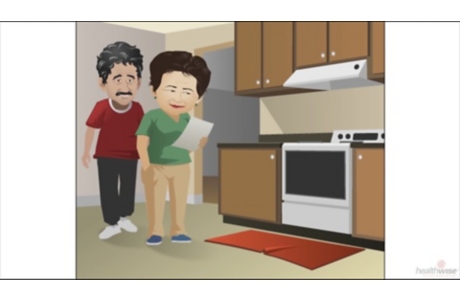Top of the pageActionset
Aging Well: Making Your Home Fall-Proof
Introduction
Getting around your home safely can be a challenge if you have injuries or health problems that make it easy for you to fall. Many health problems can increase your risk of falling—poor eyesight, balance problems caused by disease like stroke or Parkinson’s disease, side effects of medicines, weakness or pain in the legs and feet, and confusion or dementia.
For people with these conditions, common things like loose rugs, poor lighting, and household clutter can become a big safety issue. But there are easy things you can do to make your home a lot safer.
Key points
- Some common hazards in the home might make you more likely to fall. But you can make your home safer with a few simple measures.
- Falls can lead to serious injuries. Hitting your head can cause a head injury. A fall can break a bone, resulting in surgery and months of therapy.
- Preventing falls can help you live a more independent life.
Talk with your doctor
If you have questions about this information, take it with you when you visit your doctor. You may want to mark areas or make notes in the margins where you have questions.
Return to topic:
How can I make my home fall-proof?
You can make some simple changes in your home and in the way you do some daily activities to reduce your risk of falling.
To prevent falls around your home:
- Remove things that you can trip over, such as raised doorway thresholds, throw rugs, and clutter. Repair loose carpet or raised areas in the floor.
- Move furniture and electrical cords out of walking paths.
- Use nonskid floor wax, and wipe up spills right away.
- If you use a walker or cane, put rubber tips on it. If you use crutches, clean the bottoms of them regularly with an abrasive pad, such as steel wool.
- Keep your house well lit, especially stairways, porches, and outside walkways. Use night-lights in areas such as hallways and bathrooms. Add extra light switches or use remote switches (such as switches that go on or off when you clap your hands) to make it easier to turn lights on if you have to get up during the night.
- Put sturdy handrails on stairways. Make sure you have a light at the top and bottom of the stairs. Don’t leave items on the steps. Fix loose, broken, or uneven steps. Mark the areas around stairways and ramps with paint or tape, preferably with a high-contrast color.
- If you live in an area that gets snow and ice in the winter, have a family member or friend sprinkle salt or sand on slippery steps and sidewalks.
To reduce the chance of a fall during your daily activities:
- Store household items on lower shelves so that you do not have to climb or reach high. Or use a reaching device that you can buy at a medical supply store. If you have to climb for something, use a step stool with handrails.
- Do not try to carry too many things at the same time. Have a place near your door where you can place packages and groceries while you close the door and get ready to put things away.
- Wear low-heeled shoes that fit well and give your feet good support. Use footwear with nonskid soles. Check the heels and soles of your shoes for wear. Repair or replace worn heels or soles. Avoid wearing slippers that are loose or don’t cover your whole foot.
- Do not wear socks without shoes on smooth floors.
Many falls occur during bathing. To prevent falls in the bathroom:
- Install grab handles and nonskid mats inside and outside your shower or tub.
- Use shower chairs and bath benches.
- Get into a tub or shower by putting the weaker leg in first. Get out of a tub or shower with your strong side first.
- Use a long-handled brush or mittens with straps to help with bathing.
Credits
Current as of: November 7, 2018
Author: Healthwise Staff
Medical Review:Adam Husney, MD – Family Medicine & Martin J. Gabica, MD – Family Medicine & Kathleen Romito, MD – Family Medicine & Elizabeth T. Russo, MD – Internal Medicine
Current as of: November 7, 2018
Author: Healthwise Staff
Medical Review:Adam Husney, MD – Family Medicine & Martin J. Gabica, MD – Family Medicine & Kathleen Romito, MD – Family Medicine & Elizabeth T. Russo, MD – Internal Medicine
This information does not replace the advice of a doctor. Healthwise, Incorporated, disclaims any warranty or liability for your use of this information. Your use of this information means that you agree to the Terms of Use. Learn how we develop our content.


